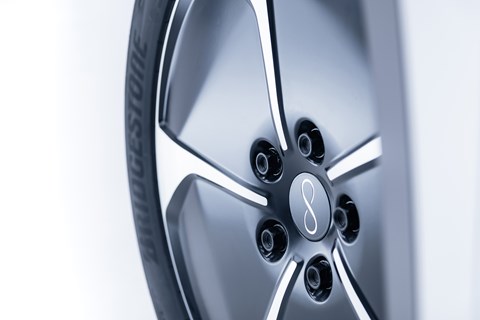► World’s first solar-powered production car
► Here in autumn 2021, costs from £156k
► New Bridgestone tyre tech to boost range
The Lightyear One solar-powered car goes on sale this autumn costing €150,000 before taxes – and it won’t be the last sun-fuelled car to come from this Dutch start-up, CAR magazine can reveal.
The CEO and founder of Lightyear, Lex Hoefsloot, told us the One was the opening salvo in a programme of solar cars that was planned to expand to include cheaper, more everyday models by mid-decade including vehicles to compete in the burgeoning crossover segment.
‘We want to progress to mass-production models by 2024-2025 and it’s being worked on now,’ he told CAR. ‘The mission of the company is clean mobility for everyone. Our technology has the potential to be much more energy-efficient than today’s electric cars – it can get further on the same battery. It has the potential to be much more convenient than the electric cars people are used to today at quite an affordable price, because the battery can be smaller.’
If the models under development can match the concept-car-for-the-road excitement of the Lightyear One pictured – a model which can drive on pure solar energy in sunny climes, with an all-electric range of 450 miles – then count us as extremely interested.
Tesla solar tiles for charing your EV at home
I can’t believe this will soon be a production car! It’s not an April Fool’s joke?
Do not adjust your set. The extreme-aero Lightyear One was borne out of the World Solar Challenge and has been under development since 2016 and is now ready to go on sale in the fourth quarter of 2021.

A limited production run of 946 vehicles is planned, all built at the company’s factory in the Netherlands. Hoefsloot said the launch cars would be sold in the EU, Switzerland and Norway. ‘No decision has yet been taken about selling in the UK, because we are only manufacturing in left-hand drive.’
It’s long at 5.1m from tip to tail and styled in an extreme teardrop shape, to boost aerodynamics but also to provide enough space for four passengers and their luggage in the generous 780-litre boot (rising to 1701, if you drop the rear seats).
That long footprint also provides enough area for 5sq m of solar panels on the roof. If you live in less sunny climes (step forward British residents), you can of course plug the car in to charge up from the mains at home (22 miles of range in one hour from a wallbox) or a fast charger (130 miles in one hour at 22kW, or 354 miles in one hour at 60kW).
How long do electric car batteries last?
Why is the Lightyear One in the news again now?
Because Lightyear has struck a deal with tyre manufacturer Bridgestone, which has developed a special lightweight version of its Turanza Eco tyres for the One. The new tyre mixes the company’s Enliten and ologic technologies for the first time, which is claimed to save 3.6kg compared with conventional eco tyres, contributing to the Lightyear’s massive 450-mile EV range.

The special rubber is fitted in a typically tall, narrow size (175/60 R19) to reduce the aerodynamic drag of the vehicle down to just below 0.20cd and the rolling resistance is much lower than on conventional tyres. Bridgestone claims the tyres add the equivalent of 17 extra miles to the 450-mile EV range.
Tyres for electric cars: our guide to the best EV tyres
Power is provided by an in-wheel motor at each corner, for four-wheel drive, but the emphasis is very much on range, not performance. The 0-62mph sprint takes ‘less than 10 seconds’ but of more interest is the 7.5 miles of range provided by one hour’s solar charging on a bright day. The battery size fitted is 60kWh.
The Lightyear One’s price of €150,000 excludes taxes. So let’s call that the equivalent of £130,000, rounded up to £156,000 including VAT and on-road charges. ‘We have sold 120 cars to people in the Netherlands already,’ Hoefsloot told CAR. ‘We have been focusing mostly on the Dutch market but will soon be ramping up our marketing efforts.
‘What we see is customers wanting something different. They want the next thing. They want the ability to charge from the sun – and if you live in Italy or Japan, you can charge more from the sun than you need, on average, in a year. In these countries, you won’t have to charge at all in a year. But it’s different in different countries. In the US, people drive more than in Europe, so you’ll likely meet two-thirds of your range requirements through solar.
‘The people who are buying these cars are in the market for a vehicle that eliminates the whole charging and range question; you can charge from a normal power socket, or you can get range from the solar panel directly or from the battery. Combined, this means you can take it anywhere, without being anxious about whether you can charge up on your trip.’
Are solar-powered cars a bright idea? Be sure to sound off in the comments below.
Further electric car reading
Our guide to the best electric cars and EVs
How much does it cost to run an EV?
How long do electric car batteries last?